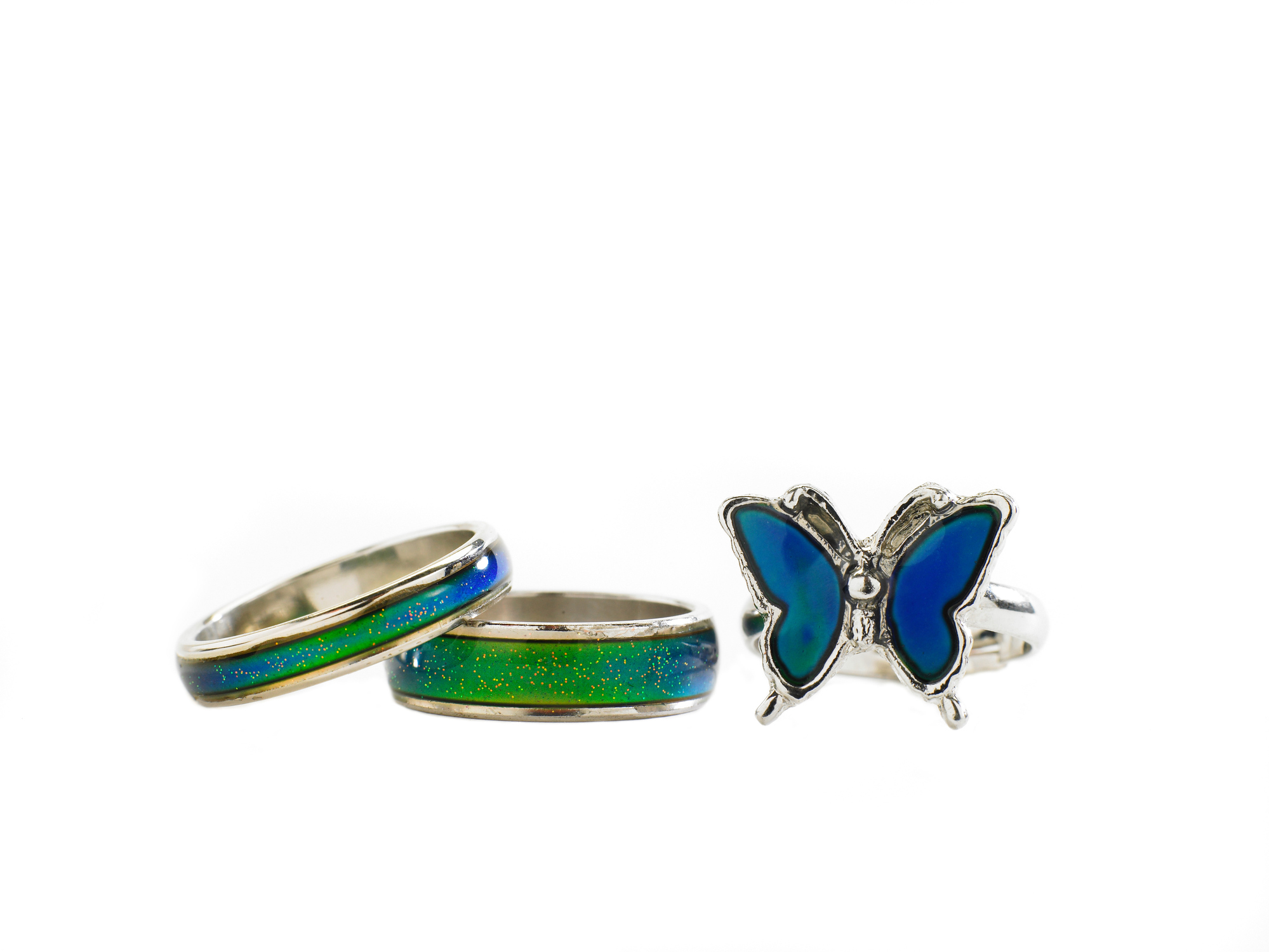

Recall that not all mood rings follow these colors and meanings. Here is a table showing the different mood ring colors and their meanings. Plus, water exposure can disrupt the crystals, turning the ring black and non-functioning. 💡 Take Note: Mood rings also turn black if broken and no longer functional. In this state, your body temperature is at its lowest. Your mood ring will turn black when you’re in a state of heightened stress, anxiety, or tension. It represents an unsteady mental state when you’re stressed, uneasy, nervous, or strained. Your ring will turn brown when you’re nervous or worried about something. Yellow or amber shades can indicate anxiety, mixed emotions, or an unsettled feeling. Yellow is a color popularly associated with anxiety and apprehension, which remains true for mood rings. This excitement can be evoked by passion and arousal or fiery anger and shock. On your mood ring, red means high levels of excitement.

This color change can indicate heightened passion, excitement, or high energy.

The warmer you get, the more the color change gets close to violet or other shades of purple. If you encounter this color, you might want to note what you were doing to see how you can recreate that state. In some rings, a deep blue hue can indicate a heightened calm state. When you’re relaxed and calm, warmth flows to your hands, and your mood ring turns blue. Green is the default color and corresponds to an average, warm body temperature. Greenįor most mood rings, green stands for an unstressed state. Each color represents a different emotional state. What do the colors on the mood rings mean?Įven though some companies use different colors for their mood rings, many rings still use the same colors the original 1970s rings had. You’ll need to refer to the ring manufacturer’s chart to be sure. This can unwittingly create misleading results.įor example, some companies design their mood rings with blue-green as the rested color, while others use yellow. Some companies use colors that don’t follow the usual pattern. The ring can’t tell the difference in everyone’s average body temperature, so it may misinterpret natural body temperatures for different emotions. This phenomenon could be health-related or just our natural biology. Some of us are naturally warmer, while others have lower body temperatures than average. We don’t all have the same body temperature. A person could be apprehensive or distressed, but the ring picks up the warmth and turns violet or green because they’re standing next to a stove or an engine. This means a person could be excited, but because they’re in a cold environment, the ring turns gray or black because of the cold. They can also pick up the warmth or cold in the wearer’s surroundings. Mood rings don’t only pick up the wearer’s temperature. Here are some reasons why mood rings may produce an inaccurate result.

Some people get accurate results, but others don’t. We get warmer when we’re excited or happy and get colder when stressed, anxious, or afraid.Īs the ring picks up these temperature differences, it changes color, and we can use those colors to tell our mood.Īs much as we’d like to have a ring pick up nuances in our feelings, mood rings don’t always do that. Often, our body temperature reflects our mood. 💡 Simply Put: Mood rings respond to the temperature changes in our fingers.


 0 kommentar(er)
0 kommentar(er)
